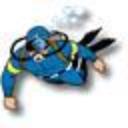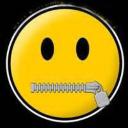Yahoo Answers is shutting down on May 4th, 2021 (Eastern Time) and beginning April 20th, 2021 (Eastern Time) the Yahoo Answers website will be in read-only mode. There will be no changes to other Yahoo properties or services, or your Yahoo account. You can find more information about the Yahoo Answers shutdown and how to download your data on this help page.
Trending News
Why not Bridge cameras?
I've seen so many people ask what's the best beginner dslr?, followed by replies saying Nikon Canon etc. Although surly for a beginner a bridge camera is the better buy, after all with that you have a lens 24-500mm in some cases, buying a dslr is restricting the beginner to a single lens, the bridge cameras like the Fugi finepix2950 it's a great buy ,cheaper than a dslr, they can be used on full manual or automatic and seems a much better deal for someone starting, after all will anyone at that level notice the quality difference. If I was at school and had a really long lens while the others had a 24-75mm lens my possibilities would be a lot greater. Ok the f stop is a restriction but could they afford good lenses anyway, I'm sure the amateur market will go in that direction.
Now are there any good reasons against a bridge camera in the case of a beginner. apart from snob value?
When I mention one lens on a dslr I am presuming that budget won't allow a second lens.
6 Answers
- deep blue2Lv 710 years agoFavorite Answer
Why not bridge cameras?
- small sensor often with far too many pixels crowded onto it = poor image quality especially in low light
- not always full manual control, often just aperture or shutter priority
- may not shoot raw format
- aperture limitations - not just at the wide end either, most bridge cameras cannot stop down further than f8
- shutter lag - probably one of the worst shortcomings
- no viewfinder - usually a ghastly LCD screen
- not usually a hotshoe, so that rules out off camera flash control
- optical quality of the lens - a 'one size fits all' is going to suffer with poorer image quality than the optics in a decent pro zoom or a prime lens
- no ability to add filters
- may have less metering options
Agree they're fine for point & shoot but not for the serious tog.
- Anonymous10 years ago
Why not indeed? I do sometimes recommend bridge cameras for people who need the versatility on a budget, however most of the time the bridge's shortcomings let it down.
Lets start with the S2950. You say it's got both manual and auto modes, but the problem is that this camera still falls more towards the auto side of things. As a result it doesn't push the user to explore the capabilities of manual control at all. The camera has no hot shoe, no filter thread.
Then there's the matter that the sensor is far too small, the small sensor means you are essentially limited to good light to photograph. Anything with too much dynamic range, or is too dark will not photograph well. Furthermore the small sensor essentially gives the user no control over depth of field, and that is a huge chunk of photography missing, and if you ever shoot medium (100x larger than compact) or large format (300-7000x larger) you'll understand what real DoF control is like.
Next is the problem of the lens. Yes the lens is versatile, but it's a big compromise. Usually squeezing huge amounts of zoom will lead to bad image performance, and a lot of bridge cameras have the habit of fringing. What an SLR allows is the user to select the most suitable lens for them, fine not a big deal for a beginner, but means they can focus on one subject at a time, rather than being distracted by a whole range of possibilities.
In my opinion, photographers should learn the old fashioned way. With a largely manual camera (digital is ok) and a 28/35mm moderate wide angle or 50mm normal lens. This way the photographer gets into good habits very early on.
- Lord BaconLv 710 years ago
I have both a 'bridge camera' (Fuji Finepix 9600) and a DSLR (Nikon D80 with a Sigma 18-270mm zoom lens). Both cameras have lenses that cover roughly the same range in terms of focal length and aperture. As an amateur on a budget, I NEED no other lens for either though, with the NIKON, I have the option.
My requirement was for a camera with a viewfinder (LCD screens are next to useless in the sun) and the option of fully manual operation (automatic settings are very good but cannot read my mind and deliver the focus or exposure I want in every situation). I bought the Fuji first without actually trying one as the specification fitted my requirements. Its weakness is that it does not have an optical viewfinder but uses a small LCD display inside the viewfinder. This is not good enough for critical focusing. Fuji try to compensate for this by allowing you to magnify the centre of the image though I find this distracting and then lose the overall framing.
The bridge camera is a good camera and takes perfectly good pictures most of the time. For the money, it was excellent value. The SLR and lens cost more but give me the viewfinder clarity I need to get the photo I want when 'aim and shoot' is not good enough. Snobbery does not come into it. If you know what result you want, you are in a position to know the right tool to achieve it. If you have never known that kind of control or the results it makes available, you probably won't miss it and will be perfectly happy with a 'bridge' camera or a simple compact, many of which are excellent in their way.
I agree that photography will tend towards cameras without an optical viewfinder or even no viewfinder at all as ever fewer users demand this refinement. That is why I am hanging on to my Nikon DSLR and my Olympus OM1 and OM2 SLR film cameras. We have already lost mainstream Hi-Fi with the quality and control I want so it will be a shame when cameras go the same way.
- screwdriverLv 710 years ago
There are lots of reasons not to buy a Bridge Camera, mostly it comes down to the small sensor, try taking pictures indoors or in low light without getting noise in the image, try taking 'selective focus' shots (where the subject is sharp, but the background is blurred), try taking off camera flash portraits, none of the Bridge cameras I know have any means of syncing a flash.Try taking action shots, there is so much shutter lag that they are virtually useless. The action has been and gone before they decide to trip the shutter, I'm not talking high speed action, just try taking images of active children or pets, you'll soon see what I mean. Try doing it in low light indoors and your stumped.
Basically they are a 'point and shoot' small sensor camera with a wide range lens' slapped onto the front of it, probably the the worst scenario for getting quality images there is.
These wide range zooms that you seem to think is so good, is actually their weakest point, all lenses have compromises in their design, non more so than the wide range zooms, aperture is not the only thing they compromise to get that zoom range, they compromise contrast, both colour and Luminance.They compromise distortions, they compromise edge sharpness, they compromise 'flat field' the same exposure right into the corners of the image (vignetting), all in all they have the optical properties of a milk bottle. If you could get a wide range zoom without any of these compromises everybody would be using them and every manufacturer would make only one lens.
The whole point of a DSLR system is that you have the possibility to photograph anything in most any light and get a good image. You can fit a DSLR to a telescope and get image of the Heavens, or to a microscope and get images of the tiny, you can fit a wide aperture prime (the Nifty Fifty is the cheapest) and get selective focus shots with superb contrast that 'pops' of the page at you.
With a DSLR camera you do have to learn to use it properly to get the best out of it, but once learnt your set up to take a quality image any where in any light, you have the right tool for the job, a Bridge Camera is like trying to knock a nail in with a screwdriver. You're fighting the limitations (listed above) of the camera all the time.
Chris
- How do you think about the answers? You can sign in to vote the answer.
- hiddenmynameLv 710 years ago
I dont think there are any good reasons - I use a bridge and love it. DSLRs do offer the user more variety in lenses, but you have to buy them first and they are expensive. Plus you have to lug them around with you. For this reason i've always gone for a bridge. I think it just depends on the user and what you're going to do with it.




